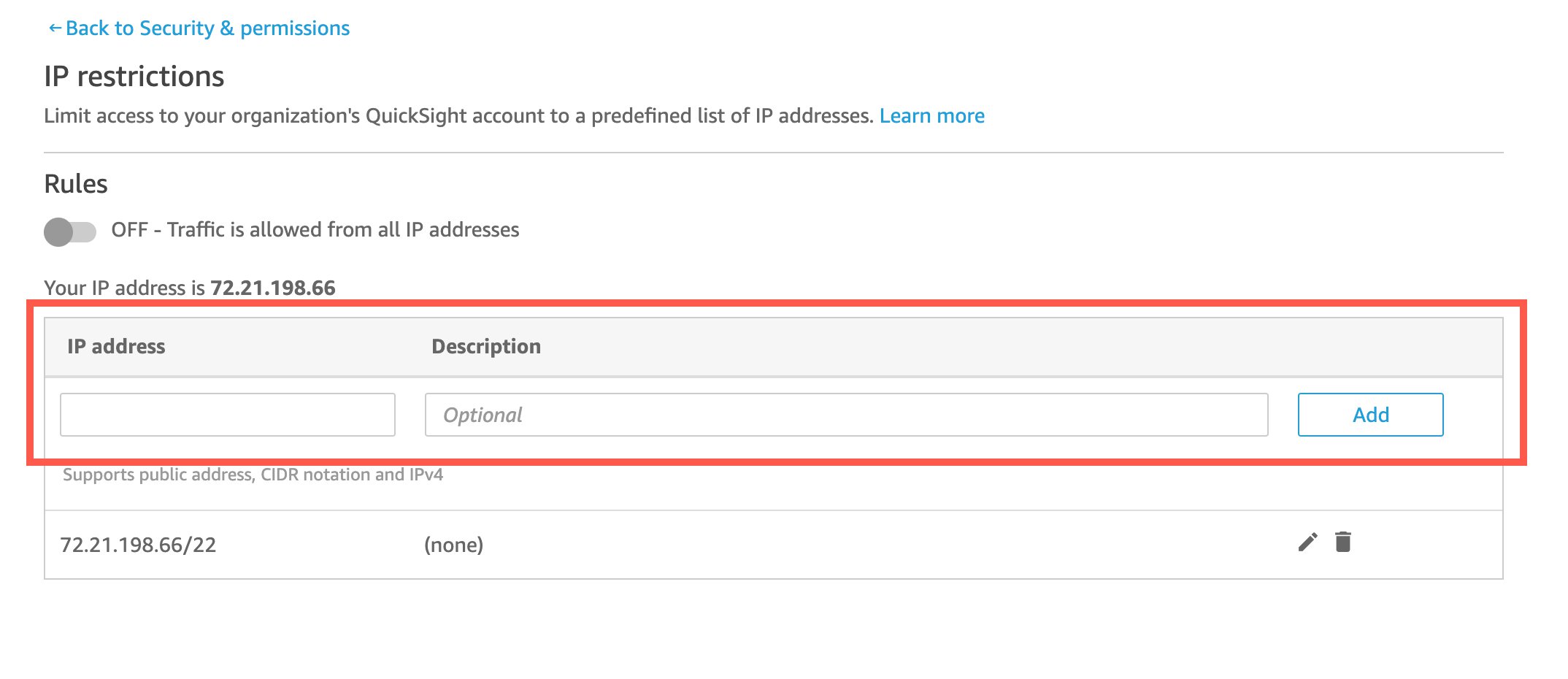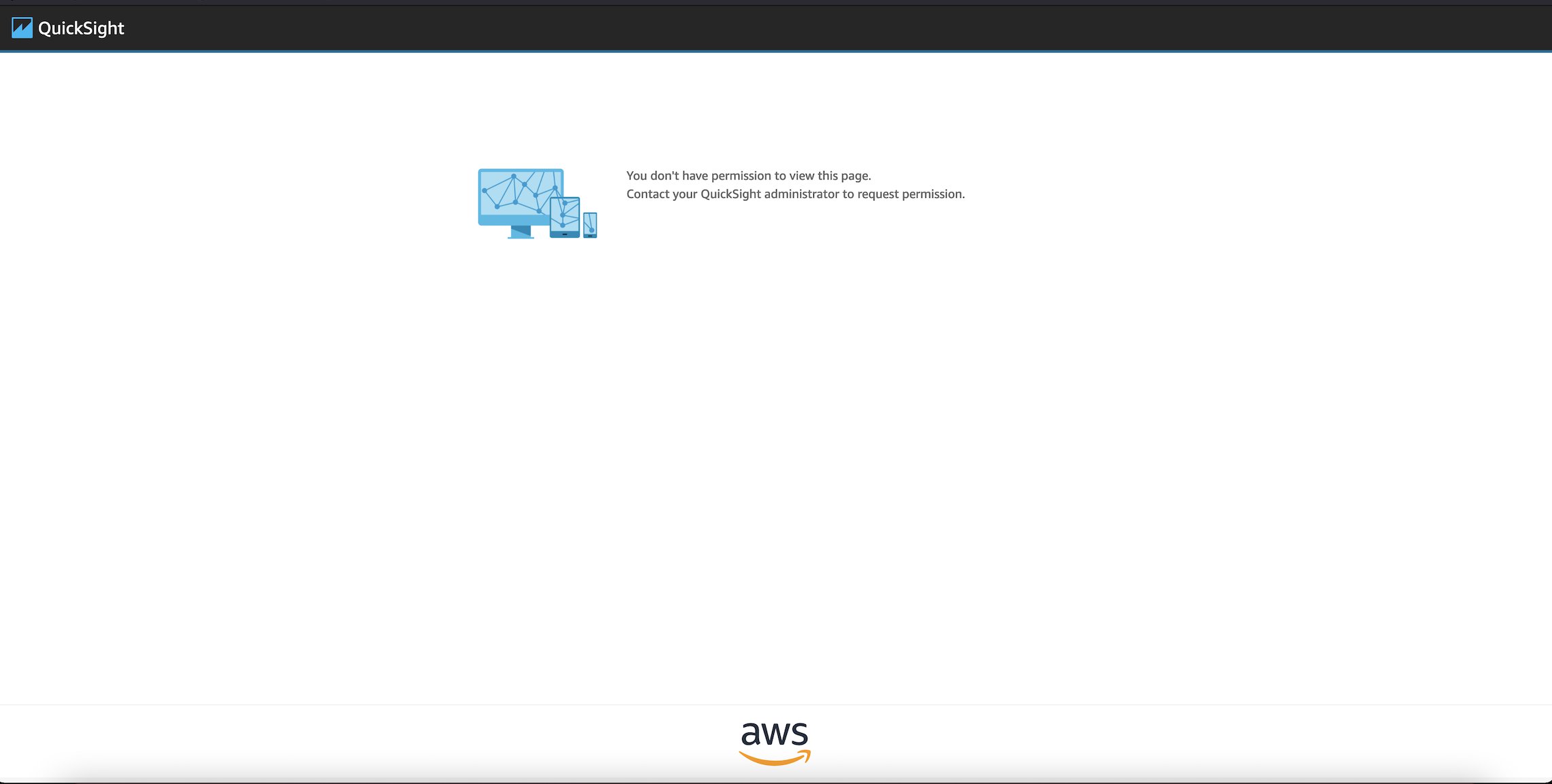AWS Big Data Blog
Use IP restrictions to control access to Amazon QuickSight
Amazon QuickSight is a fully-managed, cloud-native business intelligence (BI) service that makes it easy to connect to your data, create interactive dashboards, and share these with tens of thousands of users, either within the QuickSight interface, or embedded in software as a service (SaaS) applications or web portals. Unlike many of the other solutions in the market today, QuickSight requires no server deployments or management for scaling to tens of thousands of users, and authors build dashboards using a web-based interface, with out any client downloads needed. QuickSight also supports private VPC connectivity to AWS databases and analytics services such as Amazon Relational Database Service (Amazon RDS) and Amazon Redshift, and AWS Identity and Access Management (IAM) permissions-based access to Amazon Simple Storage Service (Amazon S3) and Amazon Athena, making it secure and easy to access data in AWS via QuickSight.
In this post, we explore a new feature in QuickSight that allows administrators to further secure access to QuickSight with IP-based access restrictions. With this feature, you can enforce source IP restrictions on access to the QuickSight UI, mobile app, as well as embedded pages. For more information, see Turning On Internet Protocol (IP) Restrictions in Amazon QuickSight.
Solution overview
Our use case features OkTank, a fictional enterprise in the fintech space. They have hundreds of users across internal teams such as finance and HR that use QuickSight for their BI gathering needs. Employees in these teams use their respective QuickSight credentials to log in to QuickSight and do their work. In addition to the team-specific BI dashboards, some common dashboards are accessible to all the employees in the organization. These dashboards reflect overall business metrics such as number of active customers and the company’s growth over time.
Employees with access to the common dashboard and their QuickSight account are sometimes working with sensitive data, and in certain cases end-user data as well. Even though they need to have login credentials to use QuickSight, QuickSight is accessible outside of OkTank’s VPN network.
OkTank’s information security team would like to ensure employees only access QuickSight or view common dashboards while they’re within the company’s private network via VPN.
Enable IP-based restrictions
To enable IP-based restrictions, OkTank’s IT administrator with IAM credentials who has access to QuickSight admin console takes the following steps:
- On the QuickSight console, on the user name menu, choose Manage QuickSight.

- In the navigation pane, choose Security & permissions.

- Under IP restrictions, choose Manage.

- For IP address, enter the IP address which is to be allowed access in CIDR format.
- Choose Add.

- To edit an existing rule, choose the pencil icon next to the rule.

- To delete an existing rule, choose the trash icon next to the rule.

- Make sure to add your own IP address to the list to prevent being locked out yourself.
- After you add, edit or delete IP address rules, choose Save changes.

- Turn on the rules to start your IP-based restriction.

When the IP restriction is turned on and the list of allowed IP addresses in CIDR format is in place, any OkTank employee trying to access QuickSight when not logged in to OkTank’s VPN (regardless of their role of admin, author, or reader) is presented with an error page.
Conclusion
With IP restrictions in place, administrators can now strengthen controls around QuickSight access by ensuring that only employees logged in the organization’s VPN network can access QuickSight. Stay tuned for more new admin capabilities, and follow What’s New with Analytics for the latest on QuickSight.
About the Author
 Mayank Agarwal is a product manager for Amazon QuickSight, AWS’ cloud-native, fully managed BI service. He focuses on account administration, governance and developer experience. He started his career as an embedded software engineer developing handheld devices. Prior to QuickSight he was leading engineering teams at Credence ID, developing custom mobile embedded device and web solutions using AWS services that make biometric enrollment and identification fast, intuitive, and cost-effective for Government sector, healthcare and transaction security applications.
Mayank Agarwal is a product manager for Amazon QuickSight, AWS’ cloud-native, fully managed BI service. He focuses on account administration, governance and developer experience. He started his career as an embedded software engineer developing handheld devices. Prior to QuickSight he was leading engineering teams at Credence ID, developing custom mobile embedded device and web solutions using AWS services that make biometric enrollment and identification fast, intuitive, and cost-effective for Government sector, healthcare and transaction security applications.
